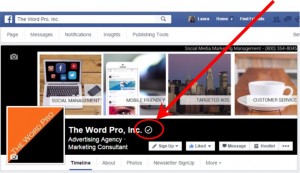By Liz O’Brien, Published November 13, 2014

When companies engage and respond to customer service requests over social media, those customers end up spending 20 to 40 percent more with that brand (Source: Bain& Company).
Failure to respond via social channels can lead to up to a 15 per cent increase in churn rate for existing customers (Source: Gartner).
Facebook has changed from what was primarily seen as just a marketing opportunity – designed to ‘humanize the brand’- to having great importance as a platform for effective customer service. Although often grouped into the same social media service channel category as Twitter, Google+, Youtube, and Instagram, Facebook retains unique characteristics which companies must take into account if they hope to maintain a high quality level of service.
Working in social customer service, you learn about the power of community within your customer base. Suddenly they’re not alone with their problem. They now have an audience who will listen to them, who will empathise and who will also fight on their behalf when you do not match up to their expectations.
Below are my top tips I would give to agents, team leaders, and contact centre friends starting out on their journey into social.
1. Don’t know the answer?
No matter how well you prepare your social customer service team or how experienced they are, sometimes they just won’t know the answer. In these instances, the best thing to do is send out a holding post. A holding post lets your customer know you’ve acknowledged their issue, but also that you’re continuing to look into it. A holding post not only reassures the customer that they’re being listened to but also allows your team to meet their SLAs and improve first response times. The customer simply wants to know you are working towards a resolution – so be honest, they’ll be much happier to wait if they have been acknowledged.
2. Addressing the community as a whole
There are times when a post or thread can become unmanageable by a single agent (usually when a sensitive issue is being discussed). When a thread becomes messy, your agents may struggle to resolve the issue and diffuse the noise being created by your social community. In these cases it is advisable to write a reply that addresses the community as a whole rather than each individual. This will placate the community and enable related content to be archived away so that your agent’s workflow is once again under control.
3. Community moderation
The existing active community and a customer viewing your page for the first time should have an accurate reflection of who you are as a brand. It can be difficult to sustain the correct balance between giving customers a portal to speak freely while also keeping the tone appropriate for the youngest audience members. Having a clear set of Community Rules accessible on your page will outline the expected tone and also gives you a reference point when you take the decision to delete a post or warn a community member. Community Rules should outline how you expect your community to interact with each other and also what topics are acceptable or unacceptable.
4. Close the loop
When personal details are needed from customers, it is common practice to move the conversation from the wall to private messages. However, it is essential that your community sees the circle completed. Once you have resolved the issue with the individual privately, it is best practice for the agent to summarize what they have done for the customer on the wall for all to see. This allows your community to follow the story from the first interaction to the resolution.
5. Adding a personal touch
Customers on social appreciate a personal touch. Your agents should begin to build up a picture of the customer from their first interaction. Encourage them to add internal notes on how the customer prefers to be addressed, if they have particular requirements and even personal facts about an upcoming birthday or arrival of a new baby. These little details are what separate social from traditional contact channels. Empowering your agents to use these details will create a customer base that is more loyal to your brand.
Social Articles | Business 2 Community
(357)
Report Post








